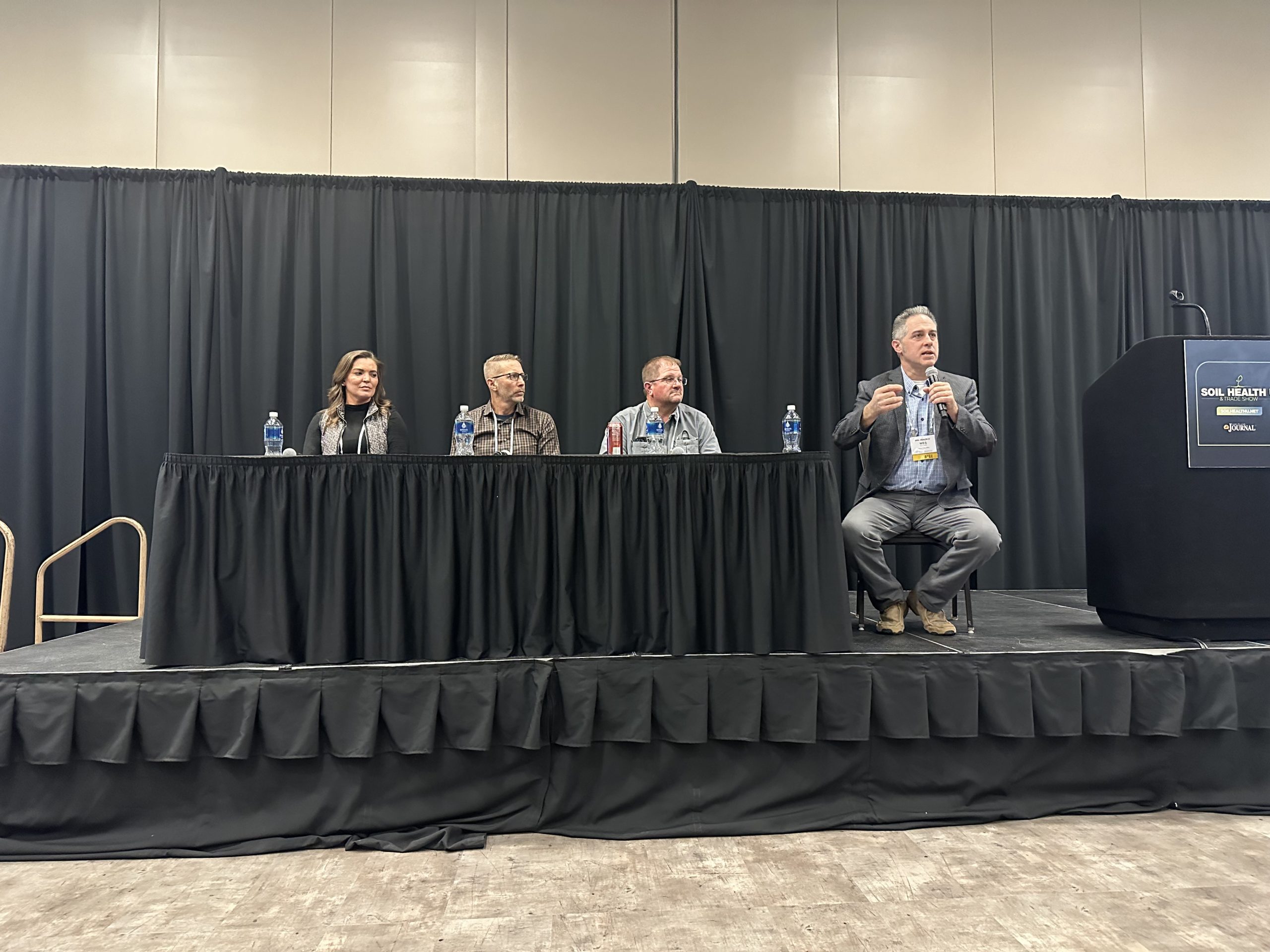Conserving water, promoting soil health

Panelists discussed farming techniques for moisture conservation during the water panel at Soil Health U 2024, held in January.
Wes McCary, tech projects coordinator at the Kansas Water Office, moderated the panel, which included Katie Durham, manager at Western Kansas Groundwater Management District No. 1; Ryan Brady, a farmer and rancher from Cimarron, Kansas; and Pat Janssen, a self-employed agricultural producer from Kinsley, Kansas.
The panelists discussed groundwater conservation and management, as well as no-till farming, soil health, cover crops and water efficiency. Janssen started one of the first water tech farms in Kansas because he was trying to determine how to increase efficiency through mobile drip irrigation.
That trial ran for three years in concert with the Nature Conservancy, Kansas State University and Kansas Corn, among others. Janssen said data from the trial showed that water conservation through the parameters established in the study was at an average of 12 to 15%, although it reached a high of 30% at one point. .
Brady, a fourth-generation farmer, manages 4,000 acres and custom farms another 1,500. His father started using no-till in the mid-1990s. By 2005, the operation was entirely no-till. He farms 75% dryland and 25% irrigated land. Brady said he is always trying to be as efficient as possible and conserve water while running two wells to pump 400 gallons a minute for one system.
After transitioning to no-till, one challenge he ran into was a hard, dry layer of soil when he went to drill wheat in the fall, Brady said. This made it difficult to press the seed into the soil far enough to reach moisture. To combat this, he started planting wheat after irrigated soybeans to utilize a living root and create what Brady refers to as a “potting soil environment” before the next crop is drilled.
“Cover crops on dryland in western Kansas have been a steep learning curve,” Brady said. “It can be done, but the management is crucial. Yes, that cover crop is using moisture, but you’re losing a lot of moisture also when you’re true chem fallow, and you have bare milo stalks. It looks nice when it’s a clean field, but that ground is just a brick. With that living cover crop root system, it’s made a difference. You get a better stand, and the secondary roots are able to develop before winter sets in.”
Janssen said utilizing rainfall and infiltration rates on bare soils has been one of the most significant developments he has experienced in water conservation.
“It’s not going to be anywhere near as good as what it is with either wheat stubble or a solid mat of residue on top of that,” Janssen said. “On our farm we’re going to burn somewhere between three-quarters of an inch of irrigation water in the spring to get the ground soaked back up and ready to hit with a strip till rig. We’re going get that moisture back throughout the remainder of the season by capturing rainfall with that residue and also keeping that soil temperature cooler.”
Durham spoke extensively about the long-term benefits of reducing water usage, both for retaining property value and sustaining crop production for future generations. “Having discussions of the short-term haircut that we might be taking off the top is going to benefit us longer and provide irrigation as a viable resource for future generations where otherwise that might not be the case,” Durham said. “If you have a direct conversion from irrigation to dryland, rather than slowly being able to either curtail or make changes to improve efficiency and application, you could extend by 10, 15 or 20-plus years, and we’ve seen data to support that.”
Durham said it is probably too soon to see direct benefits from reducing water use. However, based on experiences she has had in other parts of the country, neglecting water conservation can bring on multiple negative consequences.
“If there is nothing that is done to prolong the life of irrigation in making it a slow and steady approach rather than an all at once 30, 40, 50% cut, then you’re going to have some property value issues, and they’re currently experiencing that on the West Coast,” Durham said. “That’s what we’re trying to avoid and to do these incremental changes in order to prolong and to keep property value high.”
Lacey Vilhauer can be reached at 620-227-1871 or [email protected].



